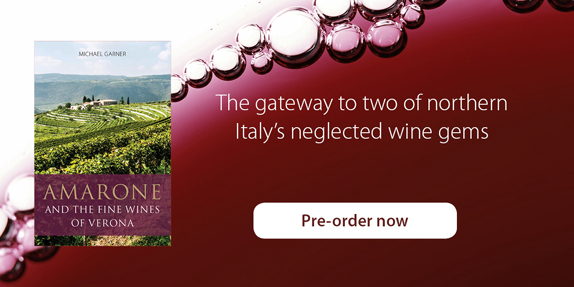The good news from Soave and Valpolicella
7 December 2017 by Rebecca in Classic Wine Library, Wine and spirits
By Michael Garner, author of Amarone and the fine wines of Verona
As many growers in the viticultural Veronese will tell you, it’s the wines made from freshly picked fruit that will tell you the most about the area’s unique growing conditions. So it’s time to turn aside from the appassimento frenzy for a moment and consider what’s been happening recently with good old Soave and Valpolicella. Remember them?
The news couldn’t be much better. The warmer summers of the last 20 or so years have led to a succession of early vintages when bringing in a fully-ripe crop of fruit has no longer been the worry it once was. Franco Allegrini for example argues that 2003 was the only vintage since the turn of the millennium in which a harvest did not achieve full phenolic ripeness. Soave and Valpolicella have been transformed as a result.
While a lot of simple Soave DOC is still a price-fighting line for many supermarkets, look a little further beyond these negoziante and co-operative sourced wines, and you’ll see growers like Marco Mosconi, Agostino Vicentini and Tenuta Sant’Antonio (all around Colognola ai Colli) producing delightfully drinkable examples with real style. Further over to the east around Ronca on the slopes of Monte Calvarina, the vineyards are sited on volcanic, basalt-based soils where a number of smaller houses – Franchetto, Corte Giacobbe, Corte Moschina, Sandro De Bruno, Fattori and Gianni Tessari – are forging a new sense of identity for the area with a series of impressively fresh, mineral-toned wines. Lying in between these two areas is Classico, where again, the wines have never been better. Widely available examples of the simple Classico DOC from the big guns – Ca Rugate, Gini, Inama, Pieropan, etc – are as reliable as ever, while some of the smaller, for now lesser-known, estates such as Coffele, Balestri Valda and Le Battistelle for example, are making wines of stunning purity and balance. Best of all is the fact that at this introductory level the wines are ridiculously underpriced for the quality they offer.
Valpolicella is also undergoing a serious makeover. The eastern part of the area (overlapping with Soave) is the source of some lovely, fresh, juicy reds brimming over with red cherry and hedgerow fruit flavours: Marco Mosconi’s Montecurto, Corte Sant’Alda’s Ca Fiui, Ca Rugate’s Rio Albo, Graziano Pra’s Morandina and Marion’s Borgo Marcellise are all fine examples. In Classico, famous names like Allegrini, Masi, Speri and Tedeschi, for example, make highly approachable versions of the simple Classico DOC which do not want for tipicita but here too newer styles are emerging which focus on conveying a real sense of place in an authentic and sometimes uncompromising manner. The Vaona family at Novaia in the Marano valley and Rubinelli Vajol in nearby San Pietro in Cariano are producing vini d’annata (the youthful wine from the most recent vintage) in a pale, aromatic, incisively fresh style which is brilliant with all manner of foods. Meanwhile examples from Villa Spinosa, Lorenzo and Cristoforo Aldrighetti or Secondo Marco (who gives his simple Classico a short period of ageing in botte) offer a fearless interpretation of the new tipicita in a more hardcore style. If a fuller, riper wine is more your thing, then look for the simple Classico from Accordini, Ca Nicolis or Begali. Uniting these varying approaches is a determination to uncover the subtle nuances that distinguish the different growing areas: Viva la differenza!
Next time: the ‘ageworthy and aspirational’ reds and whites of the two denominations

